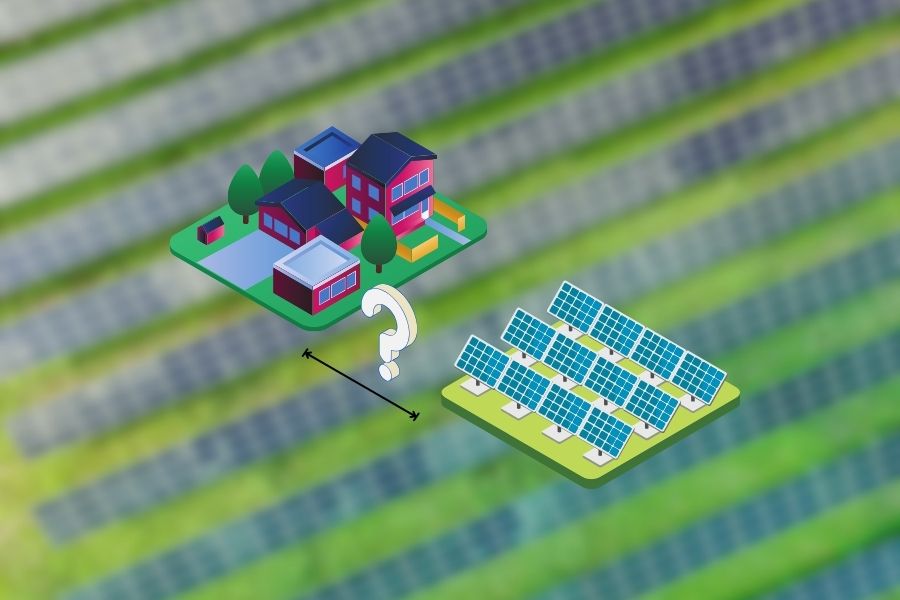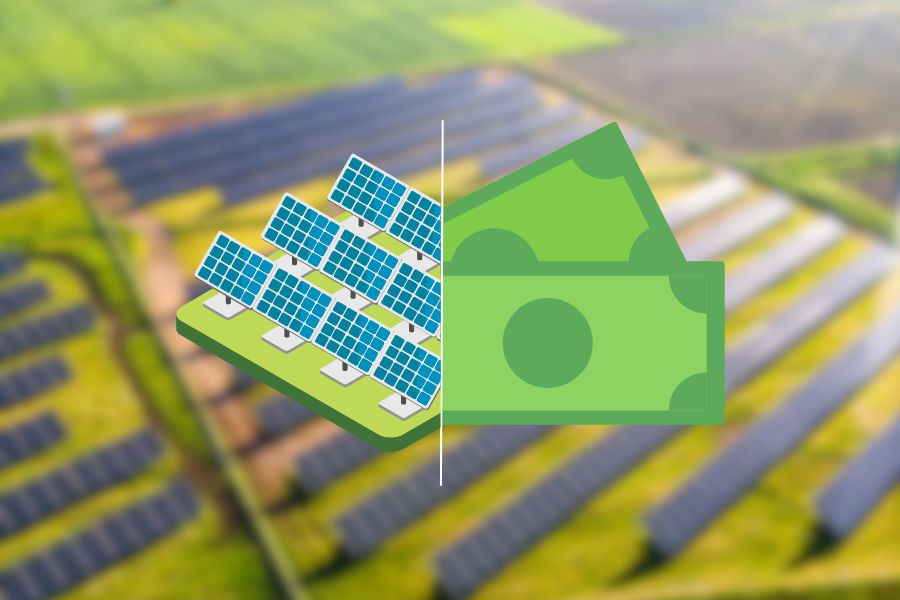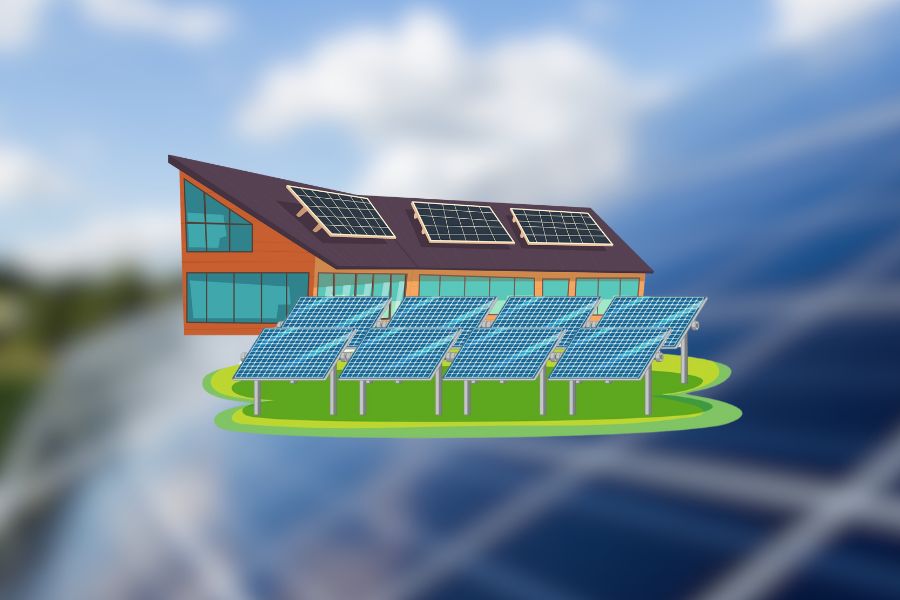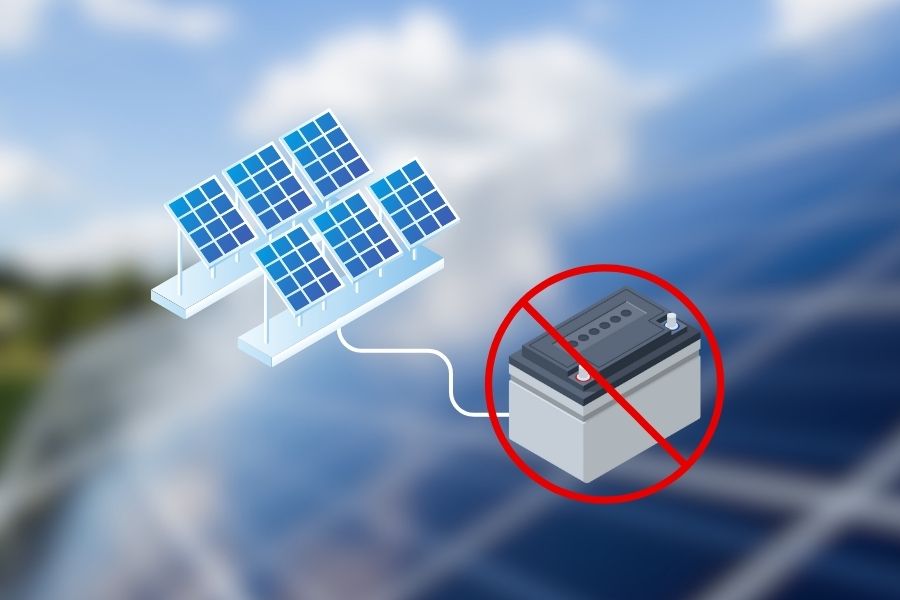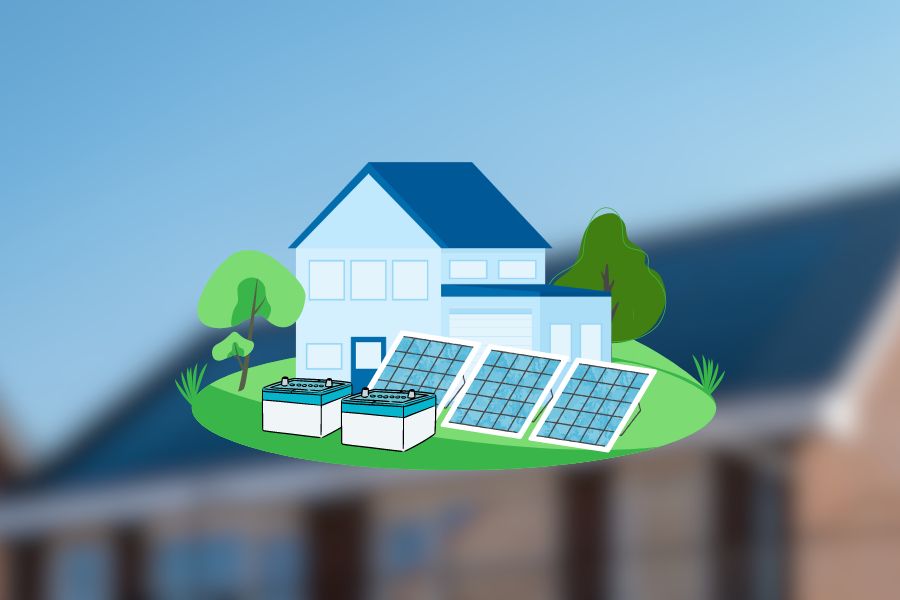Wondering what is a safe distance to live from a solar farm? Living near a solar farm raises questions about safety and comfort, especially concerning the distance that should be for residential areas.
While solar farms are inherently less harmful than many other industrial facilities, there are considerations like glare, aesthetics, and minimal electromagnetic fields.
It’s not just about the technical specifications but also the quality of life and the perceptions of those in proximity. Balancing the utility of clean green energy production with ensuring nearby residents’ peace of mind is crucial.
How Do Solar Farms Work?
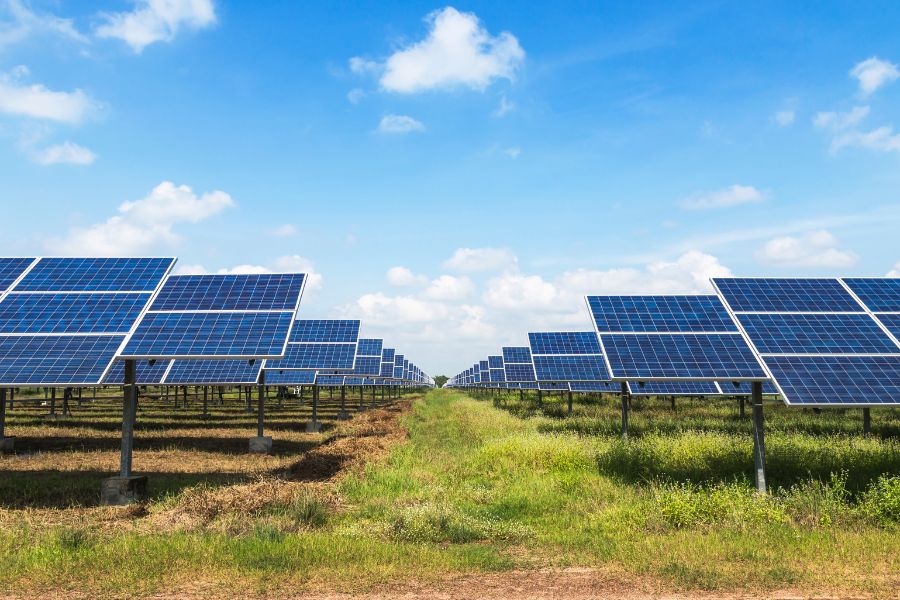
Solar farms, also known as solar parks or solar power plants, are large-scale installations of solar panels that can capture sunlight and convert it into electricity. Here’s a basic overview of how they work:
- Solar Panels: The primary components of solar farms are solar panels, often arranged in long rows, to maximize the capture of sunlight. Each panel consists of photovoltaic (PV) cells, typically made from silicon.
- Photovoltaic Effect: When sunlight hits a PV cell, it stimulates electrons within the cell. This phenomenon is called the photovoltaic effect. Electrons are knocked loose from their atoms and flow through the cell, generating electricity.
- Inverters: The electricity generated by solar panels is in direct current (DC) form. However, most power grids and appliances require alternating current (AC). Therefore, inverters help to convert the DC electricity from the solar panels into AC electricity.
- Transformers: After converting the DC to AC, the voltage might still need adjustment to match the grid requirements. Transformers help to step up or step down the voltage as required.
- Grid Connection: Once the electricity is in the appropriate AC form and at the correct voltage, it goes into the power grid. From there, it goes to homes, businesses, and other consumers.
- Monitoring & Maintenance: Solar farms typically include monitoring systems to track the solar system’s performance, inverters, and other components. Again, this helps ensure they operate efficiently and alerts operators to potential issues.
- Storage (optional): Some solar farms have battery storage systems. These batteries can store excess electricity produced during sunny periods, which can be released during cloudy days or nighttime when the panels aren’t producing power. Besides, this helps smooth out the electricity supply and can make solar energy more reliable.
- Land and Environmental Considerations: Solar farms require a significant amount of land. They are often in areas with high solar irradiance. While they have an environmental footprint (e.g., land use, panel production), they produce clean and renewable energy. They can do that without emitting greenhouse gases during operation.
- Decommissioning: Solar panels reduce efficiency after a few decades (typically 20-30 years). At the end of their lifecycle, panels and other components must be decommissioned and, ideally, recycled or repurposed.
What Are the Health Risks Living Near Solar Farms?
Living near a solar farm is generally considered safe, especially compared to other energy production facilities, such as coal or natural gas plants. However, there are some concerns and potential health risks, even if they are relatively minor or speculative in comparison. Here are some of the potential health risks and considerations associated with living near a solar farm:
Electromagnetic Fields (EMF)
All electrical devices and infrastructure, including solar panels and their associated equipment, emit some electromagnetic radiation. However, the EMF levels emitted by solar installations are typically low and are comparable to those emitted by household appliances. There’s no conclusive evidence linking low-level EMF exposure to adverse health outcomes.
Glare and Reflection
Some solar panels can produce glare, which could be a nuisance to nearby residents or drivers, potentially posing a hazard. However, modern solar panels can absorb as much sunlight as possible, minimizing reflection. Still, proper placement and orientation can mitigate this concern.
Chemical Exposure
The production of solar panels involves chemicals, some of which are hazardous. However, once the panels are manufactured and installed, the risk of chemical exposure to nearby residents is negligible. The more significant concern is during the manufacturing process and at the end of the panel’s life during disposal or recycling. One must manage these processes responsibly to prevent chemical release.
Noise
Inverters and transformers at solar farms can produce low humming noise. If homes are very close to the equipment for large-scale installations, there might be some noise concerns. These are generally minor and can be mitigated with proper placement and barriers.
Land Use and Habitat Disruption
While not a direct health risk, large solar farms can disrupt local ecosystems and habitats. It can indirectly affect human health if, for instance, it involves local water sources or land use changes leading to increased interactions between wildlife and humans.
Fire Risk
There’s a minimal risk of fires originating from solar installations due to equipment malfunction or external factors. Proper maintenance, equipment checks, and adherence to safety guidelines can significantly minimize this risk.
Visual Impact
Large-scale solar farms can significantly alter the visual landscape. While this isn’t a “health risk” in the traditional sense, it can affect the well-being and satisfaction of individuals who value the original aesthetic of the landscape.
What Is a Safe Distance to Live From a Solar Farm?
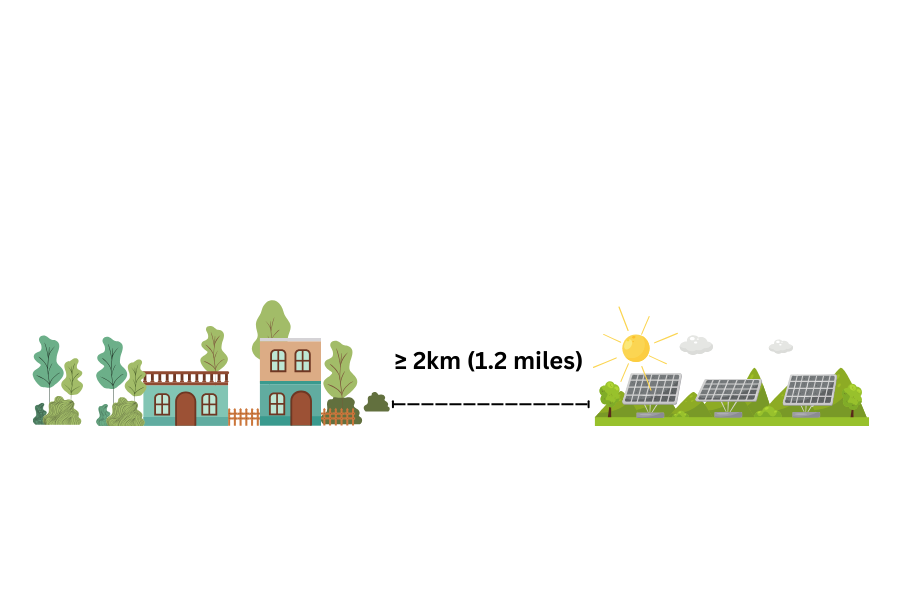
According to the World Health Organization (WHO), despite extensive research, there’s no evidence that low-level electromagnetic field exposure from facilities like solar farms harms human health. Nevertheless, for those who may still have concerns, authorities recommend maintaining a distance of at least 2 kilometers, roughly 1.2 miles, from a solar field.
Do Solar Farms Leak Toxic Chemicals?
Solar farms, in their operational phase, do not leak toxic chemicals. However, the manufacturing process of solar panels involves certain chemicals, some of which can be hazardous. It’s important to note that these chemicals are within the panels, and under normal conditions, they do not leak out during the operational life of the panel. Proper disposal or recycling at the end of the panel’s lifecycle is crucial to prevent any release of these chemicals.
Do Solar Farms Pollute Water?
Solar farms, by design, do not pollute water. Unlike other energy production forms, solar farms do not produce wastewater or other pollutants that can contaminate water sources. However, during the construction phase of a solar farm, there could be potential for sediment runoff if proper erosion controls are not in place. Good site management can mitigate such risks.
Do Solar Panels Poison Soil?
Under normal conditions, solar panels do not poison or contaminate the soil. There can be sealing of the panels, preventing any leaching of materials. However, if panels were to break, there’s a small risk of materials entering the soil, though this would be localized and minimal.
It’s more important to consider the end-of-life treatment of solar panels, ensuring they are properly recycled or disposed of, preventing potential long-term soil contamination.
Solar Farm Land Requirements
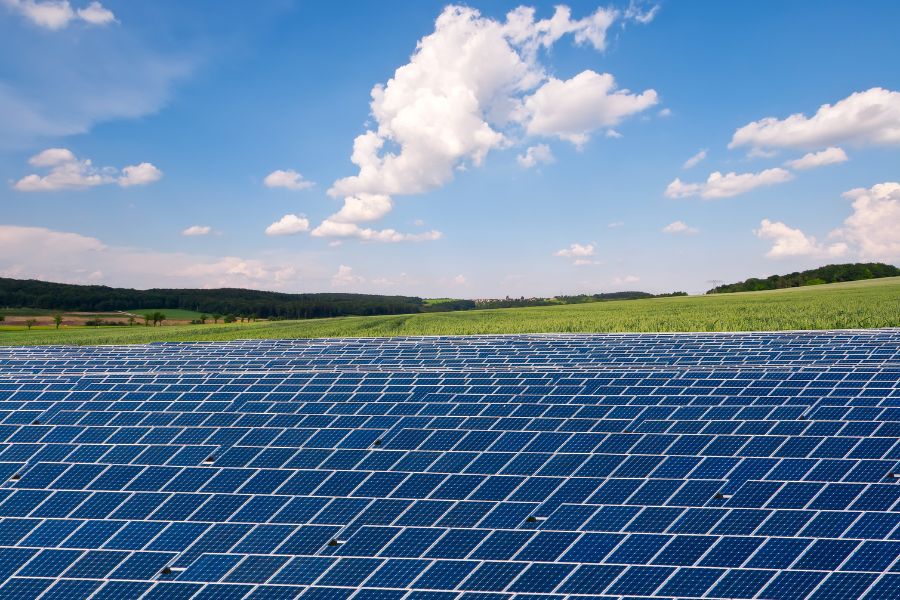
- Land Area: The area required for a solar farm varies depending on the installation’s capacity. On average, for utility-scale solar farms, approximately 5-10 acres are needed to generate 1 megawatt (MW) of electricity.
- Solar Insolation: One of the primary considerations is the amount of sunlight the area receives, often measured in terms of “solar insolation.” Regions with higher solar insolation values are more suitable for solar farms as they generate electricity for the same panel area.
- Land Topography: Flat or gently sloping lands are preferable. Steep terrains can increase the installation cost and may reduce the efficiency of panel orientation towards the sun.
- Soil Type: The soil should be stable enough to support the infrastructure, including the solar panels and mounting structures. Soil tests may be required to ensure that the land can bear the weight and that the installation will not be prone to erosion or subsidence.
- Accessibility: Proximity to roads and infrastructure is essential for transporting materials, machinery, and maintenance. Additionally, access to the electrical grid is crucial unless the solar farm is for off-grid use.
- Water Drainage: Proper drainage is vital to prevent waterlogging, which could damage the infrastructure or reduce the operational efficiency of solar panels.
- Vegetation: The land should ideally be free from tall vegetation, which might cast shadows on the panels. In some cases, one might remove vegetation, but developers should also consider the environmental impact of such actions.
- Environmental Concerns: The land chosen should not be in protected areas, habitats of endangered species, or areas of high biodiversity. Ecological impact assessments might be necessary to ensure the solar farm does not adversely affect local ecosystems.
- Local Regulations: Before developing a solar farm, it’s essential to understand local regulations, zoning laws, and any other restrictions. Some areas have restrictions on land use for large solar farms or require specific permits for large-scale solar installations.
- Future Expansion: When choosing a site, solar farm developers often consider the potential for future expansion. As technology improves or demand increases, there might be a desire to add more panels to the existing infrastructure.
- Long-Term Lease Agreements: Since solar farms have 20-30 years or more lifespan, developers often secure long-term lease agreements with landowners to ensure stability and return on investment.
Pros and Cons of Solar Energy
Pros of Solar Energy
- Renewable Energy Source: Solar energy is renewable, meaning we won’t run out of it as long as the sun is shining, which can be several billion more years.
- Reduces Electricity Bills: Installing solar panels on your property can lead to substantial savings on your electricity bills. You can also earn money by selling unused electricity back to the grid in some locations.
- Diverse Applications: Solar energy can help for various purposes, such as generating electricity (photovoltaics) or heat (solar thermal). It can also produce electricity in areas without access to the energy grid or distill water in regions with limited clean water supplies.
- Low Maintenance Costs: Solar power systems generally require minimal maintenance. Once installed, yearly cleaning and periodic inspections are typically sufficient, and many manufacturers offer warranties that last 20-25 years.
- Technology Development: With ongoing research and development, solar technology continuously improves, decreasing costs and increasing efficiency.
- Environmentally Friendly: Solar power reduces the reliance on fossil fuels, reducing greenhouse gas emissions and pollution. It also has a smaller carbon footprint during production than other forms of electricity generation.
- Job Creation: The solar industry has been a significant source of employment. In addition, there is an increase in jobs as the industry grows from manufacturing to installation.
Cons of Solar Energy
- High Initial Costs: The initial investment necessary for solar panels, including installation, can be increased. However, prices have been dropping steadily, and government incentives and rebates are often available to reduce costs.
- Weather-Dependent: Solar panels require sunlight to generate electricity, affecting their efficiency on cloudy or rainy days. While they can still produce power in diffused light, there is still a reduction in output.
- Space Requirements: Large solar panels require significant space, which can be a limitation, especially in urban settings. Some areas may need more roof space or land to produce sufficient power.
- Energy Storage Is Expensive: While it’s beneficial to store extra solar power for nighttime or cloudy days, the current solutions, like batteries, can be expensive.
- Associated Pollution: While solar energy production is clean, the manufacturing, transportation, and installation of solar panels have environmental impacts. Such ecological effects include greenhouse gas emissions. However, this is considerably lower than most other energy sources.
- Long Payback Period: Depending on the installation costs, energy prices, and incentives, it might take years before the savings on electricity bills surpass the initial costs.
- Aesthetics: Some people find solar panels unattractive, which can concern homeowners or areas with strict architectural guidelines.
Conclusion
Solar farms are increasingly prominent in Ireland’s journey towards a sustainable future.
Drawing from global research, including insights from reputable entities such as the World Health Organization, the risks associated with living near these installations appear minimal.
Yet, individual preferences and perceived comfort are equally vital. While there isn’t a prescribed “safe distance” universally applied in Ireland, it’s paramount for residents to be informed and consider their comfort thresholds.
Ultimately, as Ireland continues to harness the sun, the intersection of safety, technology, and personal choice will define the ideal proximity for each individual.
